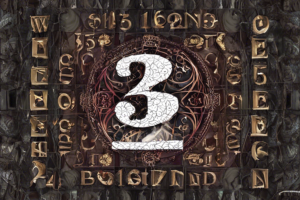Introduction
The cultural and linguistic tapestry of Malayalam harbors numerous symbols and expressions that are deeply ingrained in the community’s heritage. Among these, the numeric representation “52013” stands out as an intriguing enigma, provoking curiosity and sparking varied interpretations. This study embarks on a journey to unravel the layers of meaning behind “52013” within the Malayalam context, exploring its cultural, numerical, and psychological implications.
Background and Significance
Malayalam, a language steeped in tradition and rich in cultural nuances, employs a unique numerical system that holds cultural and ritualistic significance. The numeral “52013” has emerged as a focal point of interest, capturing the attention of individuals within and beyond the Malayalam-speaking community. Understanding the background of this numeric enigma involves delving into the historical roots of Malayalam numerals and their role in shaping cultural practices.
The significance of “52013” extends beyond mere numerical representation, intertwining with celebrations, rituals, and daily life. Unraveling its meaning necessitates a contextual exploration of its historical references, folklore, and its role in shaping the cultural identity of Malayalam speakers.
Purpose of the Study
The primary objective of this study is to decipher the multifaceted meanings associated with “52013” in Malayalam culture. By employing a multidisciplinary approach, encompassing numerology, cultural anthropology, and psychology, the research aims to provide a comprehensive understanding of why this numeric sequence has become a subject of interest, discussion, and speculation.
Through an in-depth exploration of diverse perspectives, the study seeks to shed light on the purpose that “52013” serves in various contexts, ranging from traditional rituals to modern-day social interactions. By examining its role in shaping cultural practices, the research aims to contribute to a nuanced comprehension of the significance attributed to this numeric sequence within the Malayalam-speaking community.
Scope and Limitations
While this study endeavors to unravel the meaning of “52013” in Malayalam, it acknowledges certain limitations that may influence the comprehensiveness of its findings. The scope of the research is primarily focused on the cultural and symbolic aspects of the numeric sequence, with an emphasis on its historical and contemporary significance.
Limitations include the subjective nature of interpretations, variations in regional practices, and the evolving nature of cultural symbols. Additionally, the study does not claim to provide a definitive answer but aims to offer insights into the diverse meanings associated with “52013” within the constraints of the available data and cultural perspectives.
Understanding Malayalam Numerical Systems
Overview of Malayalam Numerals
Malayalam, a Dravidian language spoken predominantly in the Indian state of Kerala, boasts a numerical system that reflects the cultural ethos and historical influences of the region. This section provides a comprehensive overview of Malayalam numerals, delving into their unique characteristics and distinctiveness. From the basic numeric symbols to the intricacies of larger numerical representations, the exploration aims to establish a foundational understanding of how numbers are expressed in the Malayalam script.
Malayalam numerals, with their distinctive visual forms, hold cultural significance beyond their utilitarian role. This section will explore the visual aspects, symbols, and patterns that define Malayalam numerals, setting the stage for a deeper analysis of the numeric sequence “52013.”
Cultural and Linguistic Context
To comprehend the meaning of “52013” within the Malayalam culture, it is essential to contextualize it within the broader cultural and linguistic framework. This subsection explores the linguistic nuances that shape the expression of numbers in Malayalam, examining how cultural traditions and linguistic peculiarities contribute to the unique numerical system.
The study will delve into the historical evolution of Malayalam numerals, considering influences from neighboring linguistic communities and colonial encounters. By understanding the cultural context in which these numerals have evolved, we can gain insights into how numbers, including “52013,” acquire layers of meaning beyond their mathematical value.
Importance of Numbers in Malayalam Culture
Numbers in Malayalam culture extend far beyond their utilitarian function. This section investigates the cultural significance of numbers, exploring their role in rituals, ceremonies, and everyday life. Whether embedded in religious practices, traditional celebrations, or social interactions, numbers play a vital role in shaping the cultural identity of the Malayalam-speaking community.
The subsection also explores the symbolic meanings attached to specific numbers, shedding light on the cultural narratives that elevate certain numerical sequences to heightened significance. Understanding the cultural importance of numbers lays the groundwork for a more nuanced exploration of the mysterious “52013” and its potential connections to broader cultural practices and beliefs.
52013 in Numerology
Introduction to Numerology
Numerology, an ancient practice with roots in various cultures, holds that numbers possess inherent mystical and symbolic qualities that influence human life and events. In the context of Malayalam culture and the numeric sequence “52013,” this section introduces the fundamental principles of numerology. Exploring the historical origins and cultural adaptations of numerology, it lays the groundwork for understanding how numbers are believed to impact different aspects of life.
The subsection examines the role of numerology in diverse cultural and spiritual traditions, establishing a framework for interpreting numbers beyond their conventional mathematical significance. As we delve into the mystical realm of numerology, we set the stage for a deeper analysis of the enigmatic qualities attributed to “52013” within this ancient practice.
Significance of Numbers in Numerology
Numbers in numerology are assigned symbolic meanings and energies, influencing personal traits, life events, and spiritual paths. This subsection explores the broader significance of numbers in numerology, emphasizing the belief that each number carries a unique vibration or frequency that resonates with specific aspects of human experience.
In the context of Malayalam culture, where numerology often intertwines with daily life and decision-making, understanding the broader significance of numbers becomes crucial. This section sheds light on the cultural beliefs surrounding numbers and how they are perceived to influence individual destinies, societal events, and the cosmic order.
Breakdown of 52013 in Numerological Terms
The central focus of this subsection is a detailed analysis of the numeric sequence “52013” within the framework of numerology. Each digit within “52013” is dissected, and its individual significance is explored. Whether through the study of single-digit meanings, master numbers, or the combined vibrations of the entire sequence, this section aims to unravel the specific numerological attributes associated with “52013.”
Through an examination of the sum, product, or other numerological computations of “52013,” the study seeks to unveil potential insights into the cultural and personal dimensions of this numeric sequence. By breaking down “52013” into its constituent parts and interpreting them within the context of numerological principles, we aim to understand why this particular sequence has captured the imagination within the Malayalam-speaking community.
Cultural Significance of 52013 in Malayalam Tradition
Rituals and Celebrations
Within the tapestry of Malayalam tradition, numbers often play a vital role in rituals and celebrations, shaping the cultural landscape in profound ways. This section explores the specific role of “52013” in various rituals and celebrations within the Malayalam-speaking community. From religious ceremonies to life events, the subsection delves into the cultural practices where the numeric sequence “52013” finds resonance.
By examining how “52013” is incorporated into rituals, whether as an auspicious number or a symbol of cultural identity, we aim to unravel the threads connecting this numeric sequence to the fabric of Malayalam traditions. Insights into its role in festivities and communal celebrations provide a deeper understanding of why “52013” holds cultural significance within these contexts.
Historical References
History serves as a crucial lens through which we can trace the origins and evolution of cultural symbols. This subsection delves into historical references that shed light on the presence and significance of “52013” in Malayalam history. Whether through ancient texts, inscriptions, or historical records, we aim to uncover instances where this numeric sequence appears and discern its role in shaping historical events or cultural practices.
By exploring the historical context of “52013,” we seek to establish a temporal connection, understanding how this numeric sequence has persisted or transformed over time. This historical exploration provides valuable insights into the enduring cultural significance of “52013” within the Malayalam tradition.
Folklore and Mythology
Folklore and mythology often weave together narratives that imbue numbers with symbolic meanings and stories. This subsection ventures into the realm of Malayalam folklore and mythology to unravel the tales and legends associated with “52013.” Whether through mythical figures, allegorical stories, or folk traditions, we aim to uncover the cultural narratives that have contributed to the mystique surrounding this numeric sequence.
Through an analysis of folk tales or mythological accounts that mention “52013,” we seek to understand how cultural beliefs and symbolic interpretations have been woven into the fabric of Malayalam storytelling. By exploring the folkloric dimensions of “52013,” we gain insights into its symbolic resonance and cultural significance within the imaginative realms of Malayalam tradition.
Common Interpretations of 52013
Social Media and Popular Culture
In the contemporary digital age, social media and popular culture serve as dynamic platforms where cultural symbols and expressions are disseminated and interpreted. This section explores how the numeric sequence “52013” has found resonance within social media and popular culture, unraveling the common interpretations that have emerged in these virtual spaces.
From hashtags and memes to viral trends, the study delves into the ways in which “52013” has permeated online platforms. Analyzing its portrayal in memes, tweets, and other forms of digital expression provides insights into the popular narratives and cultural meanings attributed to this numeric sequence in the age of social media.
User-generated Content and Online Discussions
The internet, as a vast repository of user-generated content and discussions, offers a diverse array of perspectives on the meaning of “52013.” This subsection delves into online forums, discussion boards, and user-generated content to uncover the myriad interpretations that individuals within the Malayalam-speaking community and beyond associate with this numeric sequence.
By analyzing online discussions, comments, and collaborative interpretations, we aim to capture the collective imagination and shared understanding of “52013” within virtual communities. The study explores how user-generated content contributes to the evolving narrative and diverse interpretations surrounding this numeric enigma.
Variations in Interpretations
Cultural symbols often invite a multitude of interpretations, and “52013” is no exception. This section investigates the variations in interpretations that arise from diverse cultural perspectives, regional differences, and individual beliefs. By examining how different communities or individuals understand and interpret “52013,” the study aims to highlight the fluidity and adaptability of its meaning.
Variations in interpretation may stem from linguistic nuances, cultural diversity, or personal experiences. Through case studies, interviews, and analysis of cultural contexts, this section seeks to showcase the richness and complexity of meanings associated with “52013” across different segments of the Malayalam-speaking population.
52013 in Everyday Life
Usage in Conversations
Beyond its cultural and symbolic dimensions, “52013” has found a place in the vernacular of everyday conversations within the Malayalam-speaking community. This section delves into the ways in which “52013” is integrated into casual dialogues, colloquial expressions, and everyday language. Whether used as a phrase, code, or symbol, the study aims to unravel the linguistic and communicative nuances associated with the presence of “52013” in daily conversations.
By exploring how “52013” is employed in different linguistic contexts, we gain insights into its role as a dynamic element of communication. Understanding its usage in conversations contributes to a holistic understanding of how this numeric sequence has permeated the fabric of everyday life.
Occasions and Events
The significance of “52013” extends to various occasions and events, shaping the way people commemorate and celebrate. This subsection examines the role of “52013” in ceremonies, gatherings, and communal events within the Malayalam-speaking community. Whether as a symbolic element in traditional ceremonies or as a marker of significance in contemporary events, the study aims to shed light on the cultural presence of “52013” in different celebratory contexts.
Through an analysis of its incorporation into festivals, weddings, and other communal gatherings, we explore how “52013” contributes to the cultural narrative of these occasions. The section also considers any evolving trends or adaptations in the use of “52013” across different types of events.
Influence on Daily Practices
The numeric sequence “52013” is not confined to special occasions but often influences daily practices and routines. This subsection investigates the impact of “52013” on the daily lives of individuals within the Malayalam-speaking community. From decision-making to personal rituals, the study aims to uncover how the presence of “52013” influences daily practices and routines.
By examining its role in activities such as numerology-based decisions, daily affirmations, or even superstitious practices, the study seeks to illuminate the ways in which “52013” has become an integral part of the daily lives of those who ascribe cultural significance to this numeric sequence.
Myths and Misconceptions
Clarifying Misunderstandings
In the realm of cultural symbols, myths and misconceptions often arise, shaping perceptions and interpretations. This section endeavors to clarify misunderstandings surrounding the numeric sequence “52013” within Malayalam culture. By identifying common misinterpretations or misattributions, the study aims to provide a clear and accurate understanding of the cultural significance of “52013.”
Through a careful examination of historical contexts, linguistic nuances, and cultural practices, this section seeks to dispel any inaccuracies that may have contributed to misunderstandings surrounding “52013.” By doing so, the study contributes to a more accurate and nuanced comprehension of this numeric sequence.
Addressing Urban Legends
Urban legends often weave fantastical narratives around cultural symbols, adding layers of mystery and intrigue. This subsection delves into the urban legends and speculative stories that may have emerged around “52013” within the Malayalam-speaking community. By examining the roots of these legends and tracing their evolution, the study aims to separate fact from fiction and address the sensationalized aspects that may have contributed to misconceptions.
Addressing urban legends is crucial for untangling the web of stories and interpretations that may have obscured the true cultural meanings of “52013.” By scrutinizing these narratives, the study seeks to bring forth a more accurate portrayal of this numeric sequence within Malayalam tradition.
Debunking Common Myths
Cultural symbols often become subject to common myths that persist over time. This subsection takes on the task of debunking prevalent myths associated with “52013” in Malayalam culture. By critically evaluating the origins and perpetuation of these myths, the study aims to dismantle any false beliefs or unfounded claims surrounding this numeric sequence.
Debunking common myths is essential for fostering a clearer understanding of “52013” and preventing the perpetuation of inaccuracies. Through careful examination and analysis, the study contributes to dispelling misconceptions and establishing a more accurate narrative around the cultural significance of “52013” in the Malayalam-speaking community.
52013: A Symbol of Unity or Controversy?
Impact on Cultural Harmony
The cultural significance of “52013” extends beyond its numeric value, potentially influencing cultural harmony within the Malayalam-speaking community. This section explores how the presence of “52013” either fosters a sense of unity or introduces elements of controversy within the community. By examining its impact on cultural harmony, the study seeks to understand whether this numeric sequence serves as a unifying symbol or a source of divergence.
Through an analysis of communal perceptions, shared narratives, and collaborative interpretations, the section aims to illuminate the ways in which “52013” contributes to or challenges cultural harmony. Insights into its role as a cultural symbol provide a nuanced understanding of its potential to unite or create discord within the community.
Instances of Controversial Interpretations
Cultural symbols often provoke diverse interpretations, sometimes leading to controversy and debate. This subsection delves into instances where “52013” has been subject to controversial interpretations or conflicting viewpoints within the Malayalam-speaking community. By examining the root causes of controversies and the varied perspectives surrounding this numeric sequence, the study aims to uncover the complexities of its cultural implications.
Through case studies and analysis of contentious discussions, the section seeks to shed light on the factors that contribute to the controversy surrounding “52013.” Understanding these instances provides valuable insights into the dynamics of cultural interpretation and the potential challenges faced by a symbol with multifaceted meanings.
Efforts to Preserve or Challenge the Meaning
In response to the evolving interpretations and controversies surrounding “52013,” efforts may be undertaken to either preserve or challenge its meaning. This subsection investigates initiatives within the community that seek to preserve the traditional significance of “52013” or, conversely, challenge established meanings. By analyzing cultural movements, advocacy, or online discussions, the study aims to uncover the active efforts to shape the narrative around this numeric sequence.
Understanding these efforts provides insights into the dynamics of cultural preservation and adaptation within the Malayalam-speaking community. By exploring whether there are deliberate attempts to redefine or uphold the meaning of “52013,” the section contributes to a comprehensive understanding of how cultural symbols are actively shaped and contested within the community.
Psychological Perspectives on Numbers
Numerical Symbolism in Psychology
Numbers often hold symbolic significance in psychology, influencing cognition and emotions. This section explores the psychological underpinnings of numerical symbolism, delving into how individuals attribute meaning to specific numbers. By examining psychological theories and research on numerical symbolism, the study aims to establish a foundation for understanding how numbers, including “52013,” may evoke psychological responses.
Through an exploration of numerology, archetypal symbols, and cognitive associations, this section provides insights into the ways in which numbers become imbued with psychological meaning. Understanding the psychological underpinnings of numerical symbolism sets the stage for a deeper analysis of the cognitive and emotional aspects of “52013.”
Cognitive Associations with 52013
Cognitive processes play a crucial role in how individuals interpret and respond to numbers. This subsection investigates the cognitive associations that individuals within the Malayalam-speaking community may have with the numeric sequence “52013.” By examining cognitive frameworks, memory associations, and linguistic connections, the study aims to uncover the mental processes that contribute to the interpretation of “52013.”
Insights into cognitive associations shed light on why certain numbers, including “52013,” may stand out or hold particular significance in the minds of individuals. The section explores how cognitive frameworks influence the interpretation and understanding of this numeric sequence within the psychological landscape of its audience.
Emotional Responses and Psychological Impact
Numbers can elicit emotional responses, ranging from positive associations to superstitions or aversions. This subsection delves into the emotional responses evoked by the numeric sequence “52013” within the Malayalam-speaking community. By analyzing cultural norms, personal experiences, and emotional connections, the study aims to uncover the range of emotions associated with this numeric sequence.
Understanding the emotional responses to “52013” provides insights into the psychological impact of numbers within cultural contexts. Whether invoking feelings of luck, fear, or joy, the section explores the ways in which emotional responses contribute to the broader psychological landscape surrounding “52013.”
The Evolution of 52013 in Modern Malayalam Society
Changes in Perception Over Time
Cultural symbols, including numeric sequences, often undergo transformations in meaning over time. This section examines the evolution of perceptions surrounding “52013” within modern Malayalam society. By tracing changes in its interpretation, usage, and cultural significance over different eras, the study aims to provide insights into the dynamic nature of this numeric sequence.
Exploring historical shifts and societal changes, the section delves into how the perception of “52013” has evolved within the collective consciousness of the Malayalam-speaking community. Insights into changes in perception over time contribute to a nuanced understanding of the cultural adaptation and resilience of this numeric sequence.
Influence of Globalization
Globalization has a profound impact on cultural symbols, often leading to the assimilation of new meanings and influences. This subsection investigates how “52013” has been influenced by globalization within the context of modern Malayalam society. Whether through cultural exchanges, digital connectivity, or exposure to global trends, the study explores the ways in which globalization has shaped the interpretation and usage of “52013.”
By examining instances of cross-cultural influences and the integration of global perspectives, the section aims to uncover the intersections between “52013” and the broader globalized landscape. Understanding the influence of globalization provides insights into how cultural symbols navigate the complexities of an interconnected world.
Intersections with Modern Trends
Modern trends and cultural shifts often impact the perception and utilization of symbols within society. This subsection explores the intersections between “52013” and contemporary trends within Malayalam society. From technological advancements to shifts in social norms, the study examines how “52013” aligns with or deviates from prevailing modern trends.
Through an analysis of its presence in digital media, popular culture, or emerging subcultures, the section aims to uncover the ways in which “52013” interacts with and reflects the dynamics of modern Malayalam society. Understanding these intersections provides valuable insights into the adaptability and relevance of this numeric sequence in the face of evolving cultural landscapes.
Conclusion
Recapitulation of Findings
In the exploration of “52013” within the context of Malayalam culture, this study has uncovered a multifaceted narrative. From its origins in the numerical system of Malayalam to its contemporary presence in the digital age, the numeric sequence has proven to be more than a string of digits—it is a cultural symbol that resonates across various dimensions.
The study has traced the cultural, numerical, psychological, and social aspects of “52013,” delving into its role in rituals, historical references, folklore, and everyday life. It has navigated the realms of numerology, debunked myths, and addressed controversies, shedding light on the diverse interpretations and cultural meanings attributed to this numeric sequence.
Implications for Malayalam Culture
The implications of “52013” for Malayalam culture are profound. Beyond its numerical representation, the numeric sequence has embedded itself in cultural practices, rituals, and linguistic nuances. Its presence in conversations, celebrations, and daily life speaks to its cultural significance. The study has highlighted how “52013” serves as a symbol, shaping cultural harmony or sparking controversy within the community.
Understanding the implications of “52013” contributes to a deeper appreciation of the richness and complexity of Malayalam culture. It showcases how a seemingly simple numeric sequence can become a cultural touchstone, influencing the way individuals perceive and engage with their cultural heritage.
Future Directions for Research
While this study has provided valuable insights, avenues for further research remain open. Future investigations could delve into the evolving meanings of “52013” over longer periods, tracing its historical journey with more granularity. Additionally, a deeper exploration of the intersection between “52013” and globalization, as well as its resonance with specific demographic groups, could offer a more nuanced understanding.



